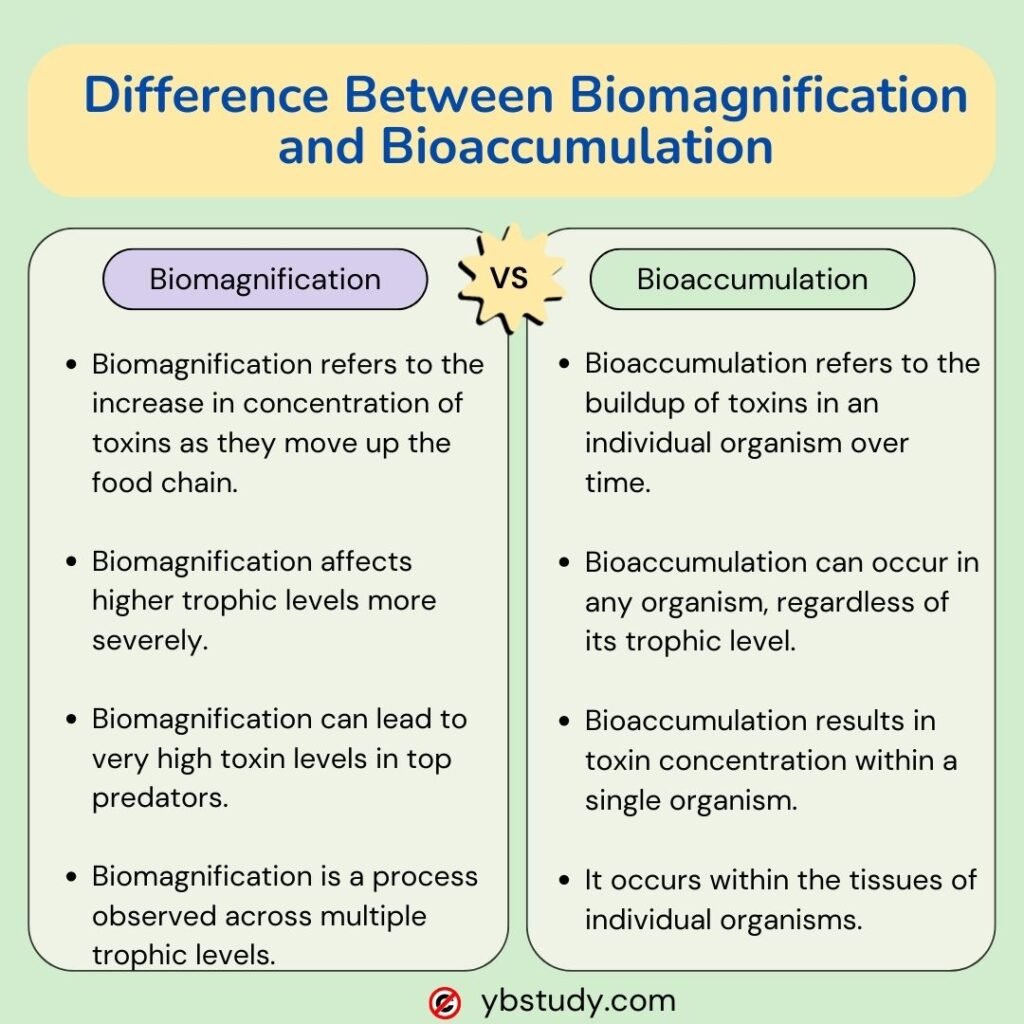5 Key Difference Between Biomagnification and Bioaccumulation
Both biomagnification and bioaccumulation are important processes in environmental science that help understand the entry of particular substances into nature and their effects, but there are difference between Biomagnification and Bioaccumulation.
Bioaccumulation is a process in which a particular substance accumulates in nature, especially in the physical state of fossils. Under this process, fossils or animals can incorporate special substances like chemical fertilizers into their bodies during their lifetime. is in process.
Bioaccumulation is when substances gradually build up in the tissues of organisms over time. On the other hand, biomagnification is the process where the concentration of substances increases as you move up the food chain. This means that organisms higher up in the food chain, like top predators, end up with higher levels of these substances in their bodies.
Both bioaccumulation and biomagnification involve the accumulation of substances in organisms, but biomagnification specifically results in higher concentrations in animals at the top of the food chain.
5 Key Difference Between Biomagnification and Bioaccumulation
One difference Between Biomagnification and Bioaccumulation is that bioaccumulation refers to the buildup of the chemical in the body of one organism, while biomagnification refers to buildup in multiple organisms. Biomagnification also requires movement up the food chain to occur, while bioaccumulation does not require the animal to be eaten.
| Biomagnification | Bioaccumulation |
|---|---|
| Refers to the process by which the concentration of a substance increases at each level of the food chain. | Refers to the process by which substances, such as toxins and pollutants, build up in the tissues of living organisms over time. |
| Biomagnification refers to the increase in concentration of toxins as they move up the food chain. | Bioaccumulation refers to the buildup of toxins in an individual organism over time. |
| Biomagnification affects higher trophic levels more severely. | Bioaccumulation can occur in any organism, regardless of its trophic level. |
| Biomagnification results from organisms eating other contaminated organisms. | Bioaccumulation results from direct exposure to toxins in the environment. |
| Biomagnification can lead to very high toxin levels in top predators. | Bioaccumulation results in toxin concentration within a single organism. |
| Biomagnification is a process observed across multiple trophic levels. | Bioaccumulation occurs within the tissues of individual organisms. |

